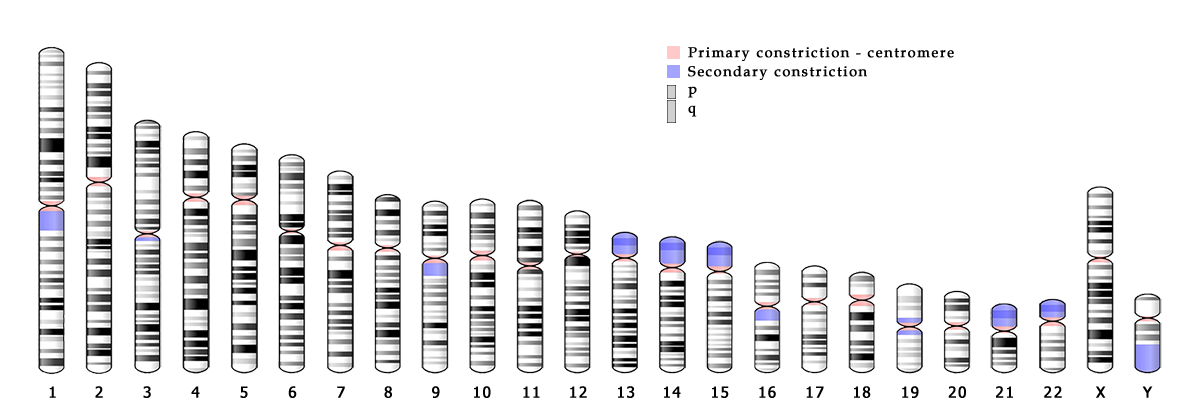
Human chromosomes
The human chromosomes are numbered from 1 to 22, with two additional chromosomes called X and Y. Chromosomes 1–22 occur as two copies in every somatic cell. The X chromosome occurs as two copies in every female somatic cell, but only once in every male somatic cell. The Y chromosome occurs only once in every male somatic cell. Thus, the sex chromosomes in males are XY, and the sex chromosomes in females are XX. Altogether, human somatic cells have 46 chromosomes (23 pairs). During mitosis, the genome condenses to form chromosomes that can be seen using a light microscope. [3]

Human chromosomes ideogram (schematic representation of chromosomes). [4]
In a point in the cell cycle, that is, during metaphase, each of the chromosomes can be seen to have two arms, the p arm and the q arm. The letter p refers to the short arm, while q refers to the long arm. The arms are separated by a centromere. The centromere is the primary constriction, a specific part of DNA molecule, and is seen as a chromosome shrinkage in which nuclear proteins bind to microtubules (cytoskeleton) and participate in the construction of the dividing spindle during cell division. Centromeres therefore play an important role in the process of placing chromosomes in the dividing plane and segregating chromosomes during cell division. Within each arm, numbers are assigned to large areas called regions, and another set of numbers is used to refer to bands within the regions. Numbering starts from the centromere, and increases as one moves towards the tip of each arm. To provide an example, the term “14q32” refers to the second band in the third region of the q arm of chromosome 14. [3]
| Name: | Size: | No. of genes: |
|---|---|---|
| Chromosome 1 | 249 Mb (million base pairs) | 2400 |
| Chromosome 2 | 242 Mb (million base pairs) | 1600 |
| Chromosome 3 | 200 Mb (million base pairs) | 1300 |
| Chromosome 4 | 186 Mb (million base pairs) | 900 |
| Chromosome 5 | 181 Mb (million base pairs) | 1100 |
| Chromosome 6 | 170 Mb (million base pairs) | 1557 |
© www.humankaryotype.com